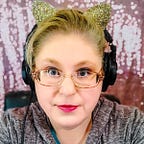COLD OPENS: Podcaster, you’re doing teasers all wrong.
The cold open in podcasting is often called a ‘teaser’ or ‘teaser clip.’ It’s the first piece of audio that listeners hear after pushing play. It’s meant to entice and captivate the audience. A juicy nugget that inspires someone to keep listening. And you’re probably using teasers all wrong.
When I was a small child, my dad and I would sit down with the WaPo comic section every Sunday morning. My dad always had a black cup of coffee when we read the ‘pewsnaper’ together.
This is where I learned how cartoonists meet their contractual obligations for space in Sunday comic section for both big and small papers. They used the Cold Open. My dad hated them.
He said it was a kind of cheating. Because their story was short. That was okay, but having that extra joke at the beginning of the comic strip wasn’t relevant to the story. It was a (usually dumb) joke dangling in the air without purpose. My dad had strong feelings about this device.
I thought my dad was hypercritical. “Oh, Dad…” I’d sigh. “Just read the rest of the comic.” I only thought about cold opens on Sundays up until I started reading the comics on my own. Then I didn’t care.
Fast forward to 2017 when I started my career in audio storytelling aka podcasting. The name may have changed, but the idea is the same. Cold opens were all the rage with podcasters.
Now I had to care. Because every single client wanted teasers. I’m not sure if most of them knew why. They only knew that #podcastdujour did it. So it must be part of the formula for success.
It was my job to pick that special clip from an interview to tease potential listeners and make them want to hear more. At that time, I preferred to stick to editing out ums and mistakes, then mixing the audio. Picking the perfect piece of audio to engage a listener was difficult. And 99.9% of that job came with no direction, no advice, no guideline from the client/executive producer.
They knew when they didn’t like it. They didn’t know why. “I don’t like that. Maybe try this other bit.”
“Wow. Thanks for the super helpful, extremely clear hint” I’d think to myself.
I was not a fan of teasers. I discouraged new clients from using them. Clients wanted teasers anyway.
So. Fine. Whatever. I’ll be THE QUEEN of TEASERS then.
I had to crack the code. (being annoyed is an excellent motivator)
What is it, really? Why is it used? How is it used effectively? What are the rules?
Y’all. It’s 2022. And we still haven’t had this conversation.
Podcasters are still misusing teasers because people like me haven’t educated them on what a teaser is, how to use it and what the rules are.
Sorry. Lemme fix that.
The teaser — or cold open — is just that. There’s no other context.
Essentially, we’re priming the listener for something: the mood, imagining a scene, sharing what’s at stake, sharing the lens we’re looking through…
…and forcing them to ask some sort of question that they now need to be answered.
Sometimes, that question is “could it happen to me?” Sometimes it’s, “that’s my problem, too… OMG, what’s the solution?!”
That, my friends, builds tension. And stories need tension. Even reading those questions alone, without any context, is a little unsettling.
The question inspired by the teaser always relates back to the listener in some way. It makes the content personal, even if it’s funny. Teasers engage because the listener can relate it to their own lives and experiences.
That’s the enticement.
I enticed you in the first paragraph of this article. I shared what a teaser was and that you’re probably doing it wrong.
You had to ask, “Am I?” Then you had to keep reading to find out the answer. Then I shared a scene from my childhood that gives you background. Next, you learned how that showed up as a problem for me.
Then I had an unexpected response to my problem.
And it’s important because…
After 8 years in the medium, there are very few examples of indie podcasters getting teasers right. Most give away the BEST take-a-way from the episode in the teaser. You’re so excited about it, you want to share it with your audience ASAP.
But that gem should be the reward for listening to your content. Because according to Ira Glass of This American Life fame, a podcast should go like this:
This happened, then this happened and THEN OMG there’s an unexpected twist and it is important because…
No mention of a teaser. Look at the order. The juiciest bits are the reward for listening.
…THEN OMG there’s an unexpected twist and it is important because…
If you absolutely feel teasers are the hill you will die on, keep reading.
Start your episode with one or some of the following:
the mood, a scene, the stakes, the lens we’re approaching the content through and force the listener to ask a question that needs an answer.
Ensure that to answer the question, listeners need to hear the rest of the episode.
I’d argue still that you don’t need to rely on teasers to grab attention. You need to rely on the basic principles of storytelling in audio. (remember Ira’s Law)
Even for an interview podcast. Because approaching teasers like a storyteller will help you get there. (People LOVE stories)
Your audience will thank you… and grow.
